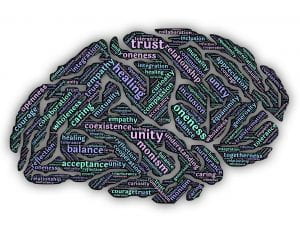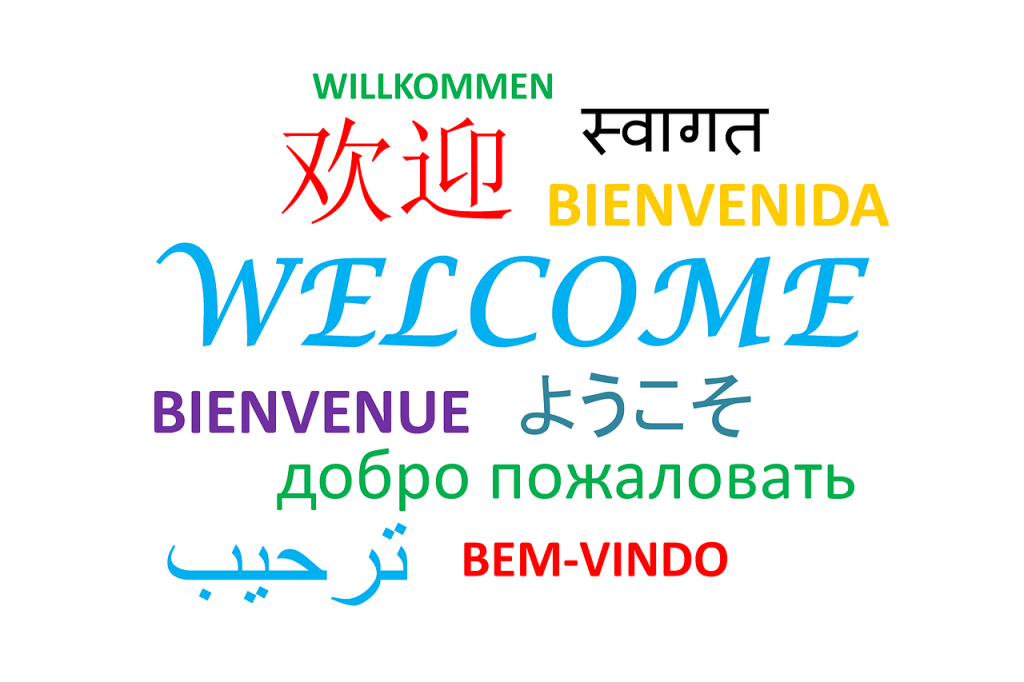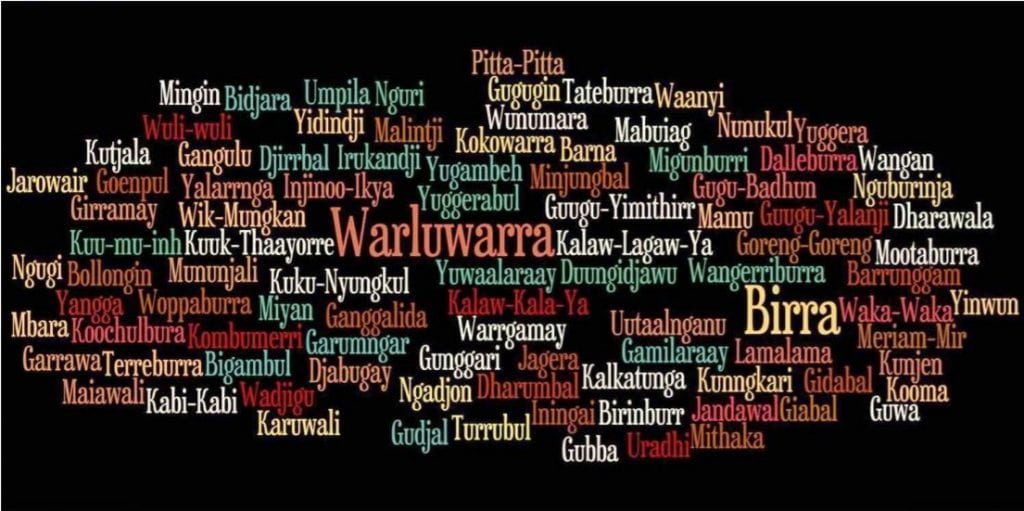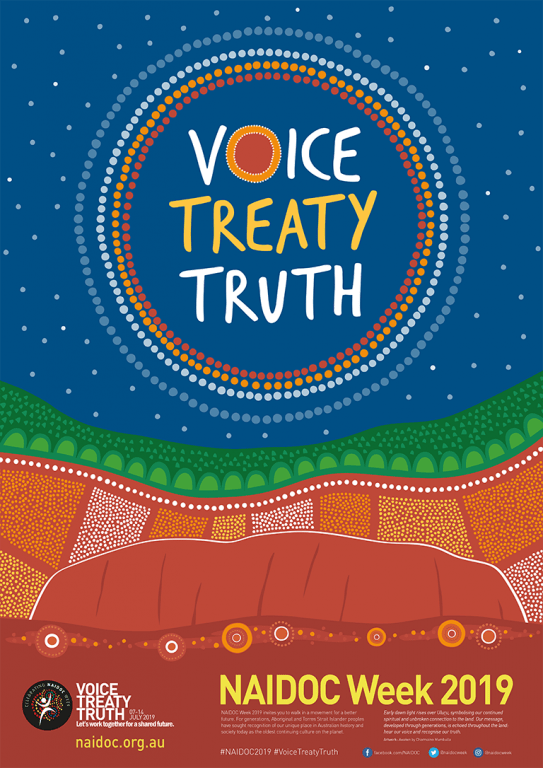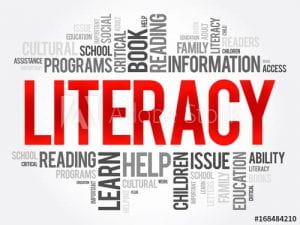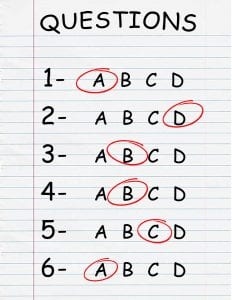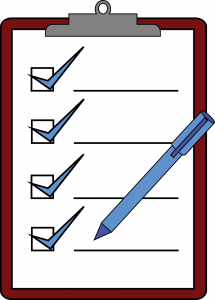Read this!
Change is inevitable and society has seen great changes to the way it functions. The current technology revolution has changed the way people earn, communicate, work, live, study and recreate. According to Vygotsky’s socio-cultural theory, reading and learning work symbiotically together with strong influences from language and technology (Hashim & VongKulluksn, 2018). Therefore by this theory, changes in technology resonates how learning, language and literacy manifests in communities. This is evident in the way the definition of literacy has expanded. Previously the term ‘literate’ was used to describe individuals who were able to read and write. But the current definition includes the skills and knowledge required to access, use, understand and express ideas, thoughts and feelings, across multiple modalities, and in all contexts of life (ACARA, 2014). The broadening of the definition is directly related to the evolving nature of technology and its impact upon the way literature and books are read, comprehended and evaluated (Sargeant, 2015; Jabr, 2015).
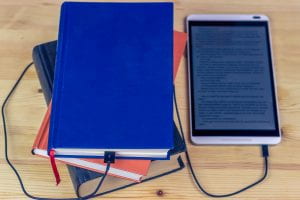
sik-life / Pixabay – The metamorphsis of the book
The concept of the book changes with every technology revolution and corresponding societal change. From prehistoric stone tablets, to Ancient Egyptian papyrus and Roman vellum scrolls, to the innovative Gutenberg printing press, books have evolved with technology, and at each transformation, the reading paradigm changes (Mangen, Walgermo & Bronnick, 2013). The modern definition of a book can include the traditional paper form, as well as electronic versions that can be read on devices such as mobile phones, tablets and laptops along with audiobooks, online books, and other digital products such as applications and websites (Springen, 2010). This emergence of these new digital texts require additional skills and strategies in order for the reader to comprehend the narrative (Jabr, 2015; Mangen et al., 2013; Sekeres & Watson, 2011). As part of evidence based practice, secondary school teachers are encouraged to adapt their pedagogical practices to address these technological and societal changes to ensure that their students possess the relevant skills and strategies to become active participants in society.
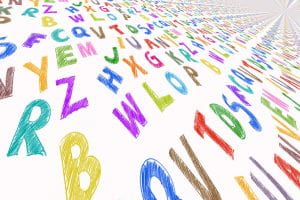
geralt / Pixabay – A is for Apple, B is for Ball…
Reading has often been characterised as the product of an individual’s ability to decode and comprehend the text and is viewed as a fundamental human skill (Moore & Cahill, 2016, p.4). Engagement in reading is linked to improved student learning and long term academic success (Moore & Cahill, 2016; Hashim & VongKulluksn, 2018). Unfortunately many teenagers and young adults are reluctant to read and this reluctance can impact their education as well as their social capital and identity formation (Moore & Cahill, 2016). Many education departments across the world have increased funding for technology in schools to boost literacy and reading rates in an effort to halt declining literacy (Keen, 2016). In turn, educators seek to identify pedagogical practices that will increase student motivation for reading and in turn, improve overall literacy.
Technology has been often cited for its ability to improve educational outcomes due to its engaging format. Morris & Cahill (2016) has determined that technology has a stronger preference in secondary compared to primary aged students. Since motivation to read and cognitive experiences when reading works via a positive feedback mechanism, it makes sense that digital literature should lead to increased reading rates and improved literacy (Hashim & VongKulluksn, 2018). Furthermore, Taylor (2018) suggests that the complex nature of digital storytelling is suitable for teenagers as they are familiar with using devices and are comfortable switching between screens and print.
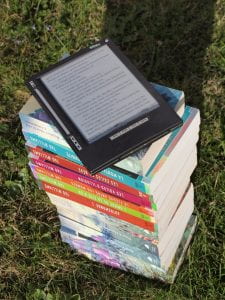
janeb13 / Pixabay – Portability of Ebooks
Technology in literature, also known as digital literature, encompasses ebooks, audiobooks, interactive media and mobile applications. Each of these technologies, delivers narratives in their own individual way and requires a variety of skills and strategies for decoding and comprehension. Many teachers and teacher librarians are tasked with identifying technology based literature in an effort to increase engagement and improve educational outcomes.
Sargeant (2015) defines an ebook as the static digitised version of a print text with its familiar features of virtual pages, book gutters and page turning animation. Access to ebooks can occur both onsite and offsite as they can be retrieved and delivered digitally to mobile devices with embedded features (Hashim & VongKulluksn, 2018). Examples include Kindle application, where ebooks purchased from Amazon can be accessed through, or BorrowBox and Wheelers, that allow for borrowing of titles and are often affiliated with public and school libraries. Some ebooks for older readers have various levels of interactivity, such as hyperlinks and in built media are commonly found in secondary expository or information texts such as text books (Sargeant, 2015). Their increased popularity with older readers is due to portability and ability to retain text anonymity (Dickenson, 2014). But ebooks that are designed for younger and less literate readers have lower levels of interactivity and contain more skeuomorphic features to reduce distraction from the main point (Sargeant, 2015) .
Jeon (2012) promotes the use of ebooks in schools as they support academic instruction, are time efficient as well as provide a dynamic and cost effective way of managing a collection. Ebooks can also be integrated into library management systems and thus are available for to be borrowed by students at any time, including in times of pandemics and forced isolation (Jeon, 2012). These apps are designed to assist readers in retaining anonymity in title choice, as well as allow access to a wide range of reading levels which encourages independent reading and promotes bibliotherapy (Hashim & VongKulluksn, 2018).

DariuszSankowski / Pixabay – Bibliotherapy
Audiobooks are increasing in popularity with readers from all generations (Moore & Cahill, 2016). The most prevalent use of audiobooks in schools are, students with low literacy and learning difficulties as well as second language learners (Moore & Cahill, 2016, p.5). Hiebert, as cited in Moore & Cahill (2016) argued that language and the fundamentals of narratives can be conveyed through auditory processes, as language-comprehension system in the brain permits text engagement and comprehension (p.3-4). Other benefits to the implementation of audiobooks in teaching and learning processes include, improving vocabulary, promoting oral language, as well as strengthening links between oral and written literacies (Moore & Cahill, 2016, p.4). Audiobooks can be easily accessed on personal devices and offer the same level of anonymity as achieved by ebooks. Anonymity is very important in secondary schools, particularly for students with low literacy who need to access ‘different’ texts (Dickenson, 2014).
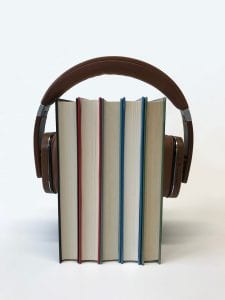
sindrehsoereide / Pixabay – Listening = Reading
Whilst there are many different reasons why students struggle to read, the most common reasons in secondary schools include, insufficient vocabulary, incorrect decoding and a lack of fluency (Moore & Cahill, 2016, p.5). Access to audiobooks allows students who struggle with the aforementioned inadequacies to engage with the text and develop their reading accuracy as well as potentially improving any behavioural management that arises from disengagement and disenfranchisement (Moore & Cahill, 2016, p.6). Audiobooks address these needs and therefore it is possible to surmise that this technology is able to provide the reader the same rich experience that is afforded by print text.

472301 / Pixabay – Mobile applications
Interactive media (IM) has exploded in recent years and this is impacting teaching and learning (Cullen, 2015). Some examples of interactive media include digital books, online books, book applications and websites. Lamb & Johnson (2010) argue that IM causes readers to shift from being passive receivers to active participants. This is because IM is able to engage students in the content via multiple entry points and therefore encourages learning through experience and experimentation (Lamb & Johnson, 2010; Cullen, 2015). IM narratives are able to tell dual stories, as well as bring the images to life whilst providing a brilliant way to connect emerging technologies to the curriculum (Cullen, 2015; Taylor, 2018).
One example of IM are book applications (apps). Book apps are software programs that are designed to engage students by delivering high levels of interactive media rich content (Sargeant, 2015). They integrate multiple modes of communication so that the text and visuals are fused to create a story that requires the reader to transform into a user by their interaction in the narrative with a touch screen (Sargeant, 2015). This process of action and outcome is based upon gamification principles already present in the rewards based system currently practiced across most school systems. Gamification uses extrinsic motivation in learning and teaching practice. But Briggs (2016) cautions the use of gamification in assessment. The reason for this caution is that the motivation to succeed arises from the low personal stakes the reader has with the text, as well as the elusive but reachable goals.
IM has the capacity to cater to the needs of a varied classroom because of a student’s ability to work at an individual pace and the multiple entry points allows for differentiation. There is also a possibility for educators to use IM to create scenarios, as a mechanism to introduce students to new units of work, or introduce assessment pieces in an engaging format (Lamb & Johnson, 2010). Cullen (2015) believes that application led learning bolsters motivation and engagement in students, which is essential for improved learning experiences and positive outcomes.
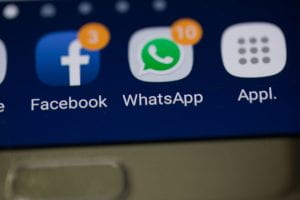
RobertCheaib / Pixabay – Device distractions.
There are valid contraindications to the use of technology in educational settings. Studies have shown comprehension is lower in narratives and expository texts when a device is used (Jeon, 2012; Mangen et al., 2013). Jeon (2012) believes that within some forms of technology, the complex nature and formatting of the text causes too great a cognitive load on students and thus it negatively affects comprehension. Hashim & VongKulluksn (2018) concur and point out that students often become distracted in their attempt to multitask on devices, which leads to decreased metacognitive regulation and reduces text completion.
The format of text is also important for comprehension. Digital literature in all forms have lower comprehension rates in comparison to traditional texts (Jeon, 2012; Mangen et al., 2013). One of the other main reasons for this unfavourable comparison is visual ergonomics. Visual ergonomics, such as lowered spatial stability, leads to a negative mental representation of the text (Mangen et al., 2013, p.66). Good readers have a high mental recall of information positioning in text. Consequently, limited mental representation restricts recall and makes it harder for students to construct new banks of knowledge from individual pieces of information. One suggestion to combat this limitation and to promote a more equitable approach in classrooms is to limit digital reading to short extracts only, and it to be of low stakes value rather than summative assessment (Mangen et al., 2013, p.66).
I obviously have not taken my own advice and have written an epic instead of a synopsis!
Hashim & VongKulluksn (2018) suggests that whilst e-readers provide context and analysis, it lacks the social factor that discussion groups and literature circles provide. There is also an implication that educators fail to treat e-readers like they treat print texts, and therefore provide less scaffolding to students leading to lower comprehension rates. This failure could be due to a lack of personal knowledge to the functionality of e-readers, or simply that teachers are not physically able to see how much of the text the student has engaged with and thus forget to offer assistance (Hashim & VongKulluksn, 2018). Therefore, in the interests of equity, it is important that ebooks are scaffolded in the same way as a print books because, as students gain mastery in their reading, scaffolding can be adjusted to help their progress from a low to a higher mental function (Hashim & VongKulluksn, 2018).
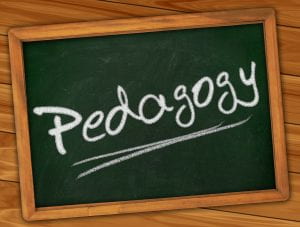
geralt / Pixabay – Pedagogy matters
There are other obstacles to using ebooks in educational settings. Primarily, students are not motivated to use e-readers for learning. This could be due to the fact that e-readers are no longer considered a novelty, that devices themselves are commonplace, and lastly, that traditional texts actually provide greater enjoyment than digital literature (Hashim & VongKulluksn, 2018). Ebooks have also been known to cause eye irritation which in turn reduces surface legibility, and increases eye strain and mental fatigue (Jeon, 2012). These physical demands lead to an increased error rate and reduces overall comprehension, which in turn leads to a lower perception of ereaders and ebooks (Jeon, 2012). Other than diminishing comprehension, ebooks can also be seen as tedious in comparison to other entertainment found on devices (Jeon, 2012). Though there is some suggestion that digital natives are resistant to these issues as they are more familiar with technology (Jeon, 2012).
Some educators are reluctant to provide audiobooks to their students in lieu of print texts as they can be viewed as ‘cheating’. But Dahl (2016) disagrees with and finds that audiobooks provide the same learning experience as reading after a certain level of literacy has been reached. This is based upon the theory that the decoding specific to reading becomes instinctive after a certain point in literacy is achieved (Dahl, 2016). The reasoning is that ‘reading comprehension’ is similar to ‘auditory comprehension’ and that echoic memory is comparable to the visual system of eye regression, though the concept of ‘flipping back’ is a bit more problematic in an audiobook (Dahl, 2016).
The current predominate argument surrounding school is that digital media will engage reluctant readers and therefore improve learning outcomes (Springen, 2010; Cullen, 2015). But some educators argue that these alternative texts lack equity as they are limited to students and schools with digital access and financial security (Sekeres & Watson, 2011). Sekeres & Watson (2011) even go further to suggest that educators need to be aware that children are often targeted as consumers in their own right and therefore teachers need to be circumspect when they select digital literature that it actually leads to learning and not just entertainment.
From a school collection perspective there are significant issues with ebooks and audiobooks, namely access and cost (O’Connell, Bates & Mitchell, 2015). This is due to the fact that both ebooks and audiobooks require a personal device such as a mobile phone or tablet and many younger students do not have that level of access. They also require a financial contribution and or a library membership, which again can be limiting for younger students to practice their digital literacy skills. One suggestion to address the rising cost of digital literature is to promote public library memberships in schools. Students who have library memberships at school, local and state libraries, have access to a wide range of texts in both print and digital formats. Some larger institutions also offer electronic access to databases and periodicals which is very useful for secondary students. This reduces the cost to the individual and school systems without limiting access to information.
Licencing and leasing are problematic when it comes to digital literature. Physical books are bought by the library, require no device to use, and are useful till the book gets lost, deselected or falls into disrepair. Ebooks in comparison, are either downloaded (purchased), or borrowed and both require a device and the internet to be used. These devices, such as iPods, ereaders, laptops and tablets can be quite expensive for school libraries and students to purchase and maintain (Gray, 2017). Additionally, if a school library chooses to use a platform such as Borrowbox or Wheelers as their access point for ebooks and audiobooks, they are limited by that publisher’s collection as to what titles meet the developmental needs of the students and curriculum requirements (Gray, 2017). Teacher librarians need to be cautious when selecting platforms for digital literature that they are not limiting their readers to resources based upon publishing contracts and nepotism. Furthermore, the school may not own ‘loaned titles’ and may have to pay a leasing or access fee on a yearly basis. So whilst there seems to be great flexibility, especially with regards to remote access, there can be some stringent financial restraints for schools when it comes to building a robust ebook and audiobook collection.
O’Connell, Bates & Mitchell (2015) suggest that the goal of school libraries is to adapt to the digital needs of the student cohort, which means that the reading culture has to be addressed as well as ensuring a divergence of media is available. Therefore, teacher librarians and school library collections are tasked with ensuring students are given ample access to the different forms of media for teaching and learning across the curriculum as well as for recreational purposes. This means access to both traditional and digital forms of literature. But promotion of wide reading programs and access to emerging literature trends needs to be buttressed by pedagogical practices that support reading and comprehension across the various domains.
The question for teachers, teacher librarians and other educators is that will these new media forms benefit the teaching and learning practices in classrooms, and more specifically, secondary classrooms? It is clearly evident that the information revolution has changed the way society is functioning. Therefore it is important that students gain the skills and knowledge to succeed in this modern world. From the evidence provided, secondary students are more receptive to digital literature because of its engaging format, portability and text anonymity. But many lack the reading and comprehension skills to fully understand the nature of the text and therefore are at a literacy disadvantage. Educators need to recall the importance of culture and tools in Vygotsky’s theory of learning and provide access to a range of literature across the various forms of media. The reading paradigm has changed and teachers must change their teaching and learning to suit this new world.
REFERENCES
Australian Curriculum, Assessment and Reporting Authority (2018). Literacy. In Australian Curriculum. Retrieved from http://www.australiancurriculum.edu.au/generalcapabilities/literacy/introduction/introduction
Dahl, M. (2016, August 10). To your brain, listening to a book is pretty much the same as reading it. The Cut. Retrieved from https://www.thecut.com/2016/08/listening-to-a-book-instead-of-reading-isnt-cheating.html
Dickenson, D. (2014). Children and reading: Literature review. Australia Council 2014. Retrieved August 2016.
Gray, M. (2017). Ebooks: To subscribe or not to subscribe? Connections, 101. Retrieved from scis.data.com/connections/issue-101/ebooks-to-subscribe-or-not-to-subscribe
Hashim, A & VongKulluskn, V. (2018). E reader apps and reading engagement: A descriptive case study. Computers and Education, 125, pp.358-375. Retrieved from https://www.journals.elsevier.com/computers-and-education/
Jabr, F. (2013). The reading brain in the digital age: The science of paper versus screens. Scientific American.
Jeon, H. (2012). A comparison of the influence of electronic books and paper books on reading comprehension, eye fatigue, and perception. The Electronic Library, 30(3), 390-408. doi: 10.1108/02640471211241663
Keen, N. (2016). Stopping the slide: improving reading rates in the middle school. Connections, 99. Retrieved from https://www.scisdata.com/connections/issue-99/stopping-the-slide-improving-reading-rates-in-the-middle-school/
Lamb, A., & Johnson, L. (2010). Divergent convergence part 2: Cross-genre, multi-platform, transmedia experiences in school libraries.Teacher Librarian, 38(1), 64-69. Retrieved from http://teacherlibrarian.com/
Cullen, M. (2015, December 21). How is interactive media changing the way children learn. In EducationTechnology. Retrieved from https://educationtechnologysolutions.com.au/2015/12/how-is-interactive-media-changing-the-way-children-learn/
Mangen, A., Walgermo, B. R. & Bronnick, K.A. (2013). Reading linear texts on paper versus computer screen: Effects on reading comprehension. International Journal of Educational Research, 58, 61-68.doi:10.1016/j.ijer.2012.12.002
Moore, J., & Cahill, M. (2016). Audiobooks; Legitimate ‘reading’ material for adolescents? Research Journal of the American Association of School Librarians. Retrieved from www.ala.org/aasl/slr/volume19/moore-cah
O’Connell, J., Bales, J., Mitchell, P. (2015). [R]Evolution in reading cultures: 2020 vision for school libraries. The Australian Library Journal, 63(3), 194-208. DOI: 10.1080/00049670.2015.1048043
Sargeant, B. (2015). What is an ebook? what is a book app? And why should we care? An analysis of contemporary picture books. Children’s Literature in education, 46, 454-466. doi: 10.1007/s10583-015-9243-5
Sekeres, D. c. & Watson, C. (2011). New literacies and multimediacy: The immersive universe of the 39 Clues. Children’s Literature in Education, 42, 256-273. Doi: 10.1007/s10583-011-9133-4
Springen, K. (2010, July 19). The digital revolution in children’s publishing. Publisher’s Weekly. Retrieved from http://www.publishersweekly.com/pw/by-topic/childrens/childrens-industry-news/article/43879-the-digital-revolution-in-children-s-publishing.html.





